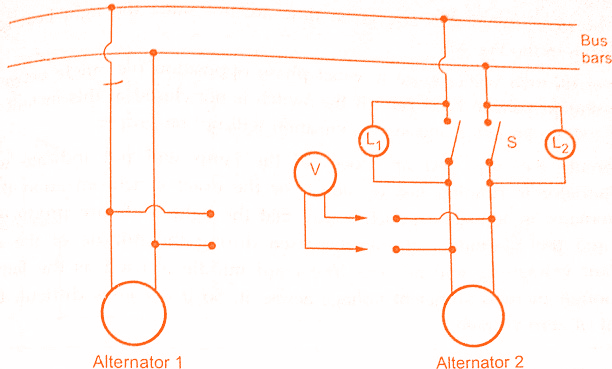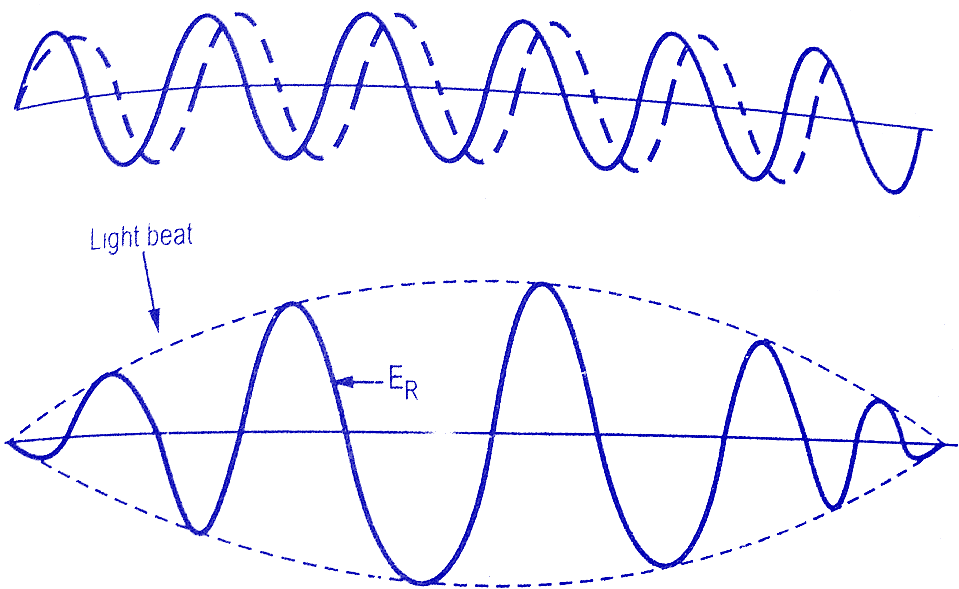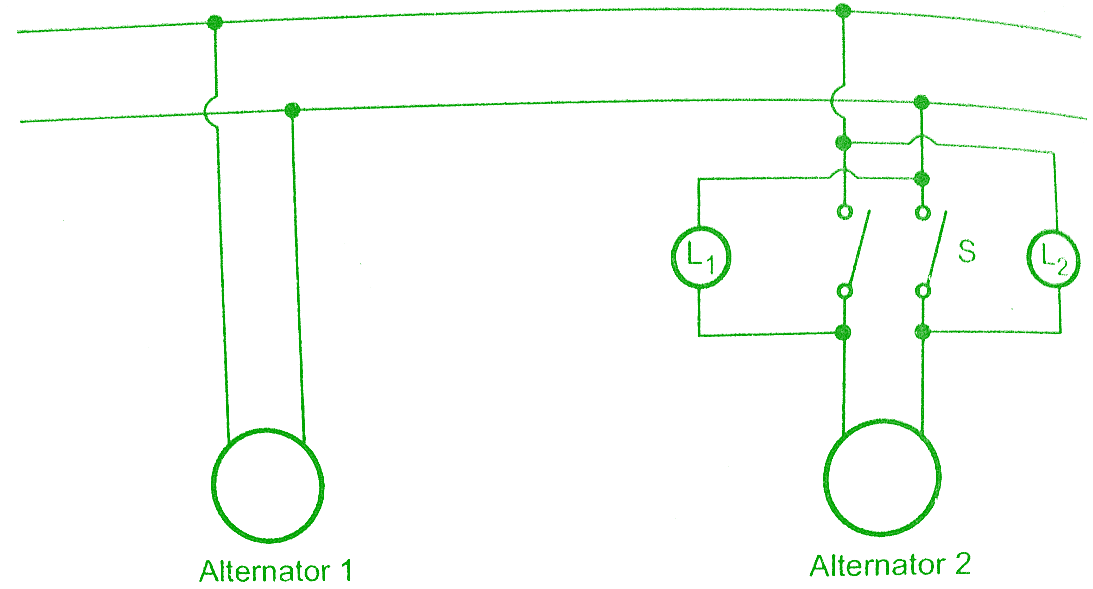Synchronisation of Single Phase Alternators:
Here we will discuss Synchronization of Single Phase Alternators and Lamps dark method & Lamps Bright method.
1.We know that a single synchronous generator gives power to a load by acting as a voltage source whose frequency is decided by its prime mover speed.The current and power factor can be found by exciting the field and impedances of the generator and load.
2.In power generation system, there are thousands of generators connected and operated in parallel so that they will get interconnected by thousands of km’s in the transmission system and will supply electrical energy to the loads which are many thousand kilometres away.
3.The reasons for interconnecting these systems are continuity of service, economics in plant investment and operating costs. When a large number of generators are operated at the same voltage and are interconnected electrically, then bus bars are used as the common electrical equipment.Bus bars are the copper rods which operate at a constant voltage.
4.The process of connecting and operating an alternator to another alternator or with a common bus without any interruption is called synchronisation. Alternately, it can also be defined the process of connecting the two alternators in parallel without any interruption.
5.The synchronous machine which is to be synchronised is normally called an incoming machine.If any alternator is connected to a bus bar which is connected many other alternators, no matter what power it is supplying then the alternator is said to be connected to the infinite bus bar.
6.An infinite bus bar is one whose frequency and phase e.m.f. is unaffected by changes in the condition of any one machine connected to it.
7.Thus they are nothing but the constant frequency and constant voltage bus bars. The system can be efficiently analysed if it is connected to the infinite bus bar. In the case of synchronous machines, stator carries the armature winding which is having a small resistance.
8.Under stationary conditions emf induced in stator winding is zero.So if such an alternator at stationary condition is connected to the bus bar, there may be a danger of short circuit.So it is not good practice to connect a stationary alternator to live bus bars.
Must Read:
To have effective synchronisation without any interruption there are certain conditions that are to be fulfilled.These following are the conditions:
i) The terminal voltage of the incoming machine must be equal to that of bus bar voltage.
ii) The frequency must be same as that of the incoming machine as well as that of the bus bar. This necessitates that speed must be properly adjusted (f = PN/120).
iii) Phase sequence for the two voltages must be same with respect to the external load
Key Point: The violence of any of the above conditions may cause a circulating current and power surges which are accompanied by undesirable electromechanical oscillations of the rotor.
The above conditions can be satisfied by using a voltmeter, synchronizing lamps or synchroscope. The use of voltmeter will satisfy the first condition. Preferably the same voltmeter is used for measuring both the voltages. By using synchronizing lamps conditions (ii) and (iii) will be fulfilled.
Synchronisation of Single Phase Alternators:
In case of single phase alternator, synchronisation is done generally by lamp methods.Synchronisation of Single Phase Alternators can be done in two ways
1) Lamps dark method
2) Lamps bright method
1) Lamps dark method:
In this Lamps dark method, the lamps are arranged as shown in the below figure. The alternator synchronised (which is also called incoming alternator) consists of two lamps connected across the switch terminals of the same phase.
The voltage for the two alternators is measured with the help of a voltmeter.The lamps are connected in such a way that the polarity and the frequency for the two machines can be checked.No resultant voltage will appear across the switch terminals if the frequency of the two alternators is exactly same as well as their voltages are in exact phase opposition.
Thus under this case lamps will not glow.The voltages for both the machines are having same maximum and rms values and are in exact phase opposition thus the resultant voltage is zero in the local circuit.This is represented in the below figure.
It can be seen that with unequal frequencies of the two alternators, the two lamps will become alternately bright and dark.The light beat will be produced whose number is equal to the difference in frequencies for the two machines.
The resultant voltage appearing across the lamp will be a difference of the two voltages at any instant resulting in a waveform shown in the below figure of Lamp Dark Method.Since the number of cycles completed by two machines in any given time is not same the light beat is produced which is shown in the above figure.
Whenever the two voltages are in exact phase opposition (i.e. angle between them is 180°) then resultant voltage E is zero.If the switch is not closed at this instant the voltage across lamp will go on rising and synchronisation will not be proper.
The alternate darkness and brightness of the lamp will not indicate whether the incoming alternator is running fast or slow.For the exact synchronisation, the speed of incoming alternator is adjusted in such a way that the light beats are produced at a very slow speed and the alternators are synchronised during the middle of the dark period, where resultant voltage ER, will be zero.The word middle is used as the lamps will not glow even though there is sufficient voltage across it. So it becomes difficult to know the correct instant of zero voltage.
2.Lamps Bright Method:
Since it is very difficult to judge the correct instant of zero voltage in Lamps dark method, this Lamps Bright Method has been introduced which is shown in the below figure.The lamps remains maximum bright when there is no difference in voltages for the two machines.This Lamps Bright Method is more sharp and accurate method of synchronization because the lamps are much sensitive to changes in voltage at their maximum brightness than when they are dark.
Conclusion:
Now we have learnt about synchronization of Single Phase Alternators – Lamps Dark & Lamps Bright Method.You can download this article as pdf, ppt.If any queries, you can email @ palakalaamarnath@gmail.com




The article is so helpful since it has a lot of content and everything i wished to know about dark method of synchronization.
Thank you for your comment! I’m glad to hear that you found the article helpful and informative. If you have any further questions or feedback, please feel free to let me know.